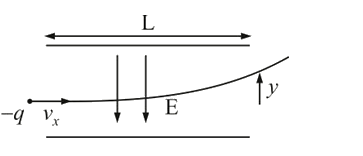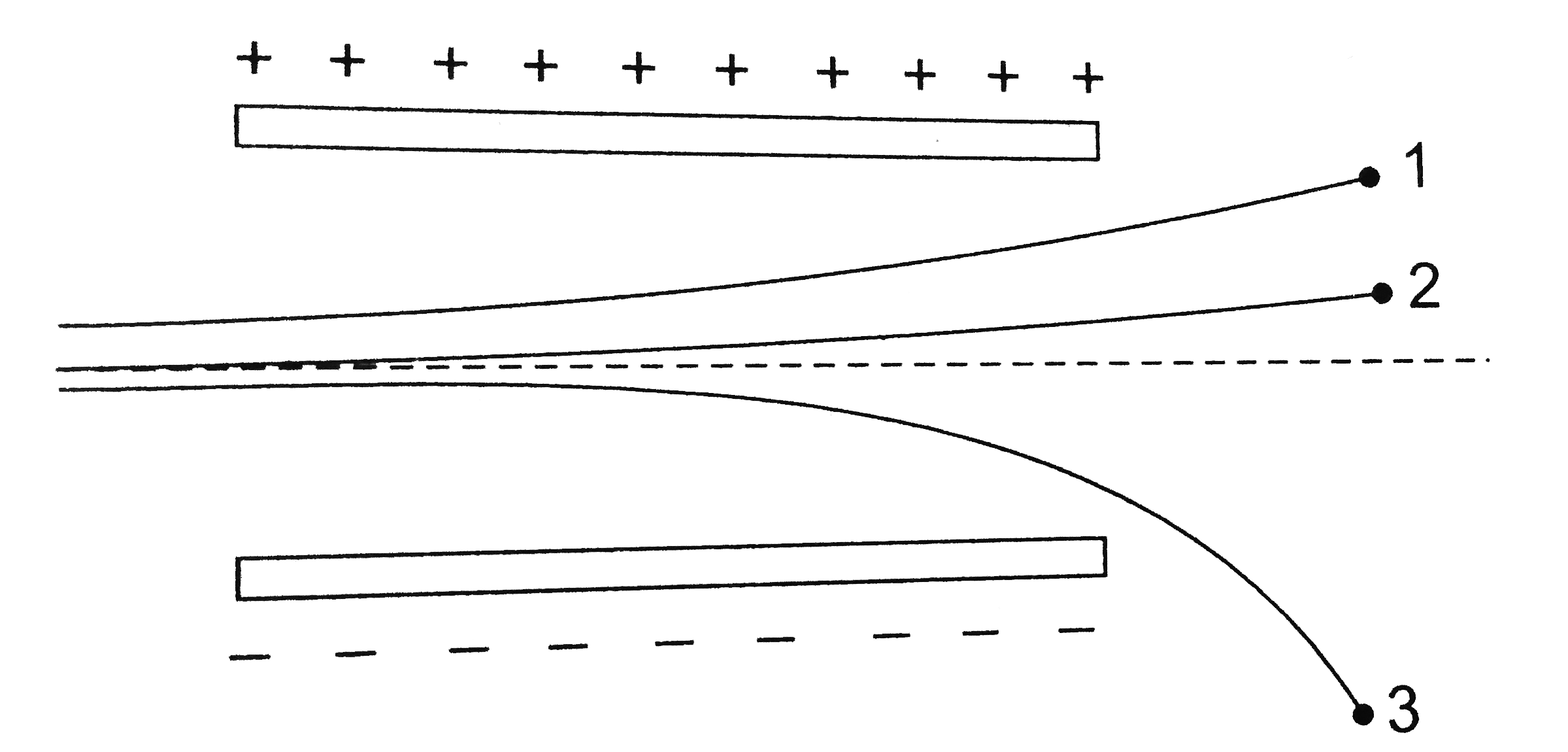Ncert File (Textbook Exercise) from MODERN PUBLISHERS PHYSICS Chapter 99 ELECTRIC CHARGES AND FIELDS for Class 12
| Class 12 | PHYSICS |
| Chapter | ELECTRIC CHARGES AND FIELDS |
| MODERN PUBLISHERS PHYSICS | Ncert File (Textbook Exercise) |
| Medium | English |
| Academic Year | 2023-2024 |
Question 8
Two point charges qA=3μC and qB=−3μC are located 20 cm apart in vaccum (a) what is the electric field at the mid point O of the line AB joining the two charges ? (b) If a negative test charge of magnitude 1.5×10−9C is placed at the point, what is the force experienced by the test charge ?View SolutionQuestion 12
(a) Two insulated charged copper spheres A and B have their centers speparated by a distance of 50 cm. What is the mutal force of electrostatic repulsion if the charge on each is 6.5×10−7C ? The radill of A and B are negalible compared to the distance of separation.
(b) What is the force of repulsion if each sphere is charged double the above amount, and the distance between them is halved ?View SolutionQuestion 13
Suppose the spheres A and B in Exercise - 12 have identical sizes. A third sphere of the same size but uncharged is brought in contact with the first, then brought in contact with second and finally removed from both. What is the new force of repulsion between A and B if the distance between them is 50 cm?
 View Solution
View SolutionQuestion 17
Careful measurement of the electric field at the surface of a black box indicates that the net outward flux through the surface of the box is 8.0×103Nm2/C (a) what is the net charge inside the box ? (b) If the net outward flux through the surface of the box were zero, could you conclude that there were no charges inside the box ? Why or why not?View SolutionQuestion 19
A point charge causes an electric flux of −1.0×103Nm2/C to pass through a spherical Gaussian surface of 10.0 cm radius centred on the charge. (a) If the radius of the Gaussian surface were doubled, how much flux would pass through the surface ? (b) What is the is the value of the point charge ?View SolutionQuestion 23
Two large this metal plates are parallel and close to each other. On their inner faces, the plates have surface charge densities of opposite signs and magnitude 17.0×10−22C/m2. What is →E : in the outer region of the first plate. (b) in the outer region of the secound plate, and (c) between the plates ? See Fig.
 View Solution
View SolutionQuestion 25
In a certain region of space, electric field is along the z-direction throughout. The magnitude of the electric field is, however, not constant but increases uniformly along the positive z-direction, at the rate of 105N.C−1 per metre. What are the force and torque experienced by a system having a total dipole moment equal to 10−7 C. m in the negative z-direction. View SolutionQuestion 27
(a) A conductor A with a cavity as shown in Fig, is given a charge Q. Show that the entire charge must appear on the outer surface of the conductor.
(b) Another conductor B with charge q is inserted into the cavity keeping B insulated from A. Show that the total charge on the outside surface of A is (Q+q) fig.
(c) A sensitive instrument is to be shielded from the strong electrostatic field in its environment. Suggest a possible way.
 View Solution
View SolutionQuestion 30
It is now believed that protons and neutrons (which constitute nuclei of ordinary matter) are themselves built out of more elementary units called quarks. A proton and a neutron consist of three quarks each. Two types of quarks, the so called 'up' quark (denoted by u) of charge + (2/3)e and the 'down' quark (denoted by d) of charge (-1/3) e, together with electrons build up ordinary matter. (Quarks of other types have also been found which give rise to different unusual varieties of matter.) Suggest a possible quark composition of a proton and neutron.View SolutionQuestion 31
(a) Consider an arbitrary electrostatic field configuration. A small test charge is placed at a null point (i.e, where →E=0) of the configuration. Show that the equilibrium of the test charge is necessarily unstable.
(b) Verify this result for the simple configuration of two charges of the same magnitude and sign placed a certain distance apart.View SolutionQuestion 32
A particle of mass m and charge(-q) enters the region between the two charged plates intially moving along x - axis with speed Vx . The length of plate is L and a uniform electric field E is maintained between the plates . Show that the verticles deflection of the particle at the far edge of the palte is qEL2/(2mv2x).
 View Solution
View Solution
All Exercises from MODERN PUBLISHERS PHYSICS Class 12 PHYSICS ELECTRIC CHARGES AND FIELDS
- COMPETITION FILE ( Objective Question (Assertion Reason ) )
- COMPETITION FILE ( Objective Question (BB.MCQ))
- COMPETITION FILE ( Objective Question (BC.MCQ))
- COMPETITION FILE ( Objective Question (C.MCQ))
- COMPETITION FILE ( Objective Question (D.MCQ) Passage )
- COMPETITION FILE ( Objective Question (A.MCQ) )
- COMPETITION FILE ( Objective Question (BA.MCQ) )
- COMPETITION FILE ( Objective Question (BA.MCQ))
- COMPETITION FILE ( Objective Question (Integer))
- Chapter Practice Test
- Conceptual Questions
- Higher Order Thinking Skills & Advanced Level (Questions With Answers)
- Ncert File (Ncert (Exemplar Problems) )
- Ncert File (Textbook Exercise)
- Practice Problems
- Revision Exercises (Additional Question)
- Revision Exercises (Fill in the Blanks )
- Revision Exercises (Long Answer )
- Revision Exercises (Numerical Problems )
- Revision Exercises (Short Answer )
- Revision Exercises (Very short)
- Solved Example
- Tough & Tricky Problems


